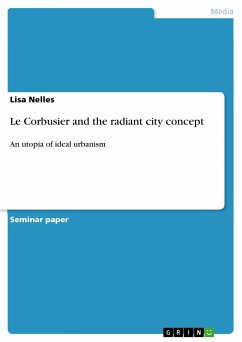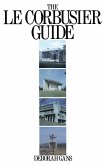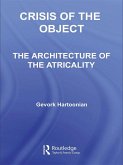Seminar paper from the year 2013 in the subject Art - Architecture / History of Construction, grade: -, Technical University of Darmstadt, language: English, abstract: Charles-Édouard Jeanneret-Gris, born October, 6th 1887, is known as one of the most important architects of the last century. Otherwise, he is also seen extremely controversial in-between his artistic municipality. According to his point of view of architecture as a complex art of construction, he also dealt with architectural theory, city planning, sculpture and designing of furniture. Additionally, he was creative in drawing and painting. In "L'Esprit Nouveau" - an artistic magazine published since 1920 - he began to use the pseudonym Le Corbusier. Due to architecture, Le Corbusier's so-called "Five Points of a new Architecture" are very important. These principles point out a radical architectural change in order to react to the accelerating progress of mechanization and its influence on social change. As a result, Le Corbusier especially dealt with the construction of accommodations to implement his complex theory consistently. So-called "Doppelhaus in der Weißenhofsiedlung in Stuttgart" - designed by Pierre Jeanneret and Le Corbusier - seems to be an example. To give his theories and visions a suited area, Le Corbusier academically worked in architectural societies like "Congrès Internationaux d'Architecture Moderne" (CIAM). However, the architect was one of CIAM's co-founders. Until the mid 1920s, Le Corbusier was both, a social and an artistic supporter of capitalism. "Ville Contemporaire" (1922) with its forced authority, clear structure and geometry is an important evidence for his ideal. Since the beginning of the crisis of global economy in 1929, Le Corbusier has changed his point of view in a more radical one. The architect became an infernal supporter of so-called French syndicalism. Le Corbusier died on August, 27th 1965.
Dieser Download kann aus rechtlichen Gründen nur mit Rechnungsadresse in A, B, BG, CY, CZ, D, DK, EW, E, FIN, F, GR, HR, H, IRL, I, LT, L, LR, M, NL, PL, P, R, S, SLO, SK ausgeliefert werden.









